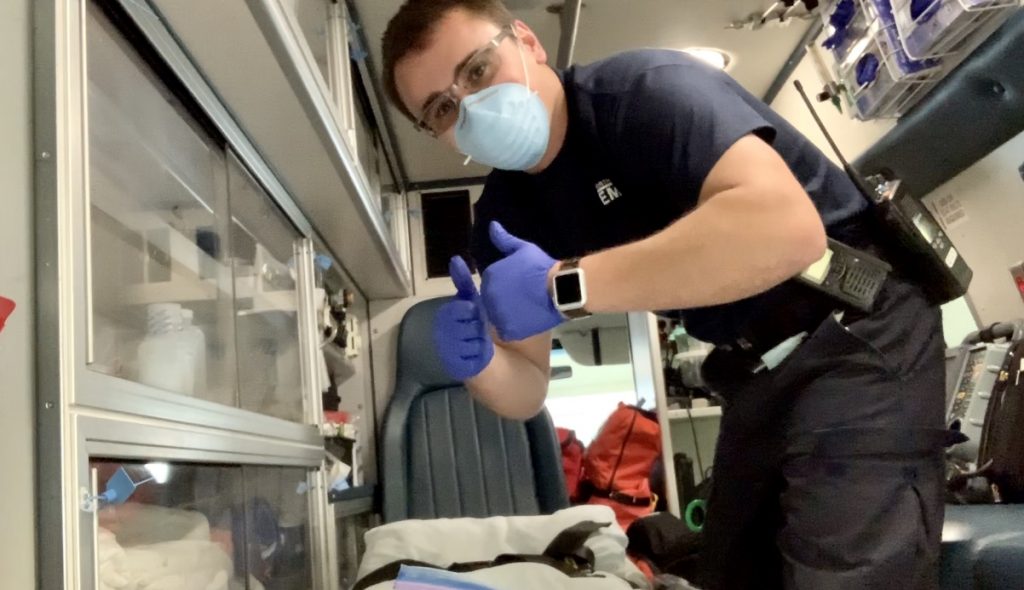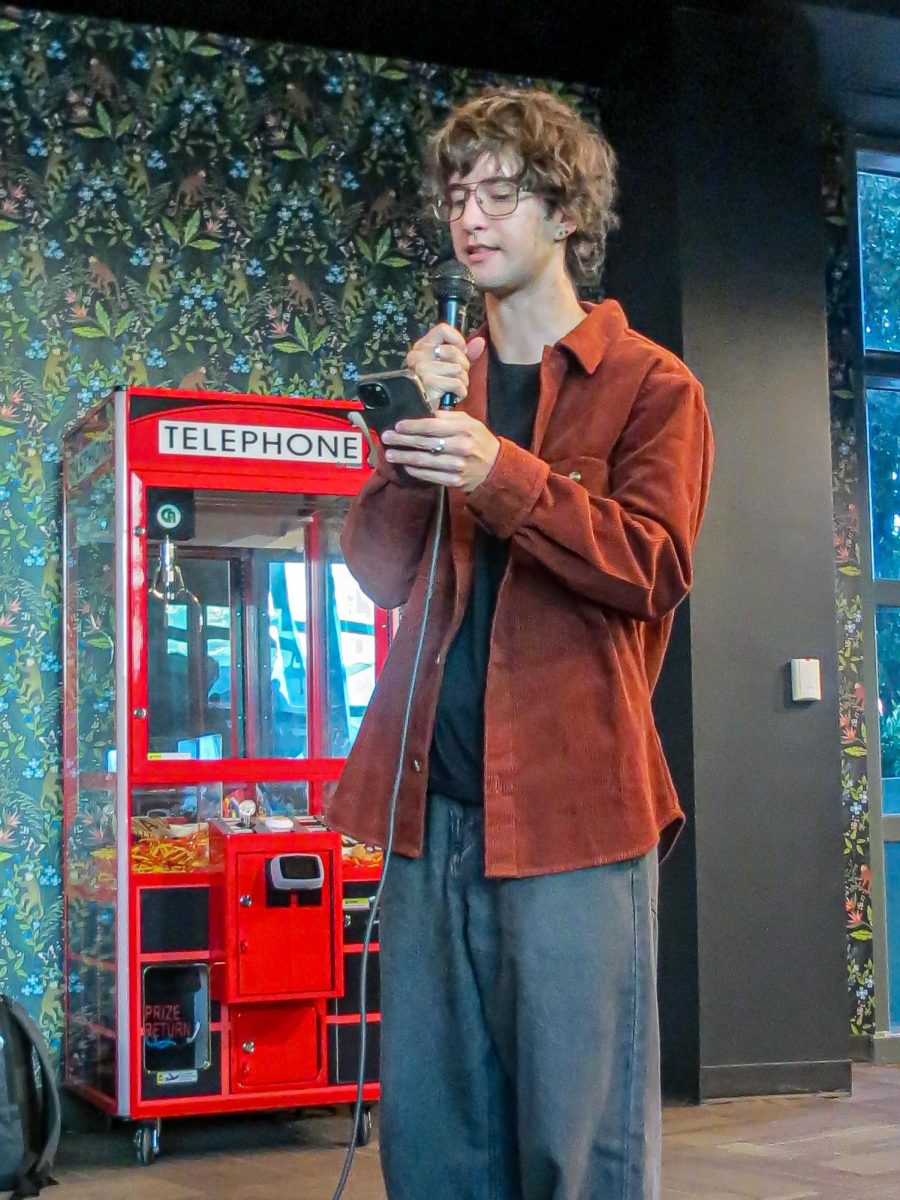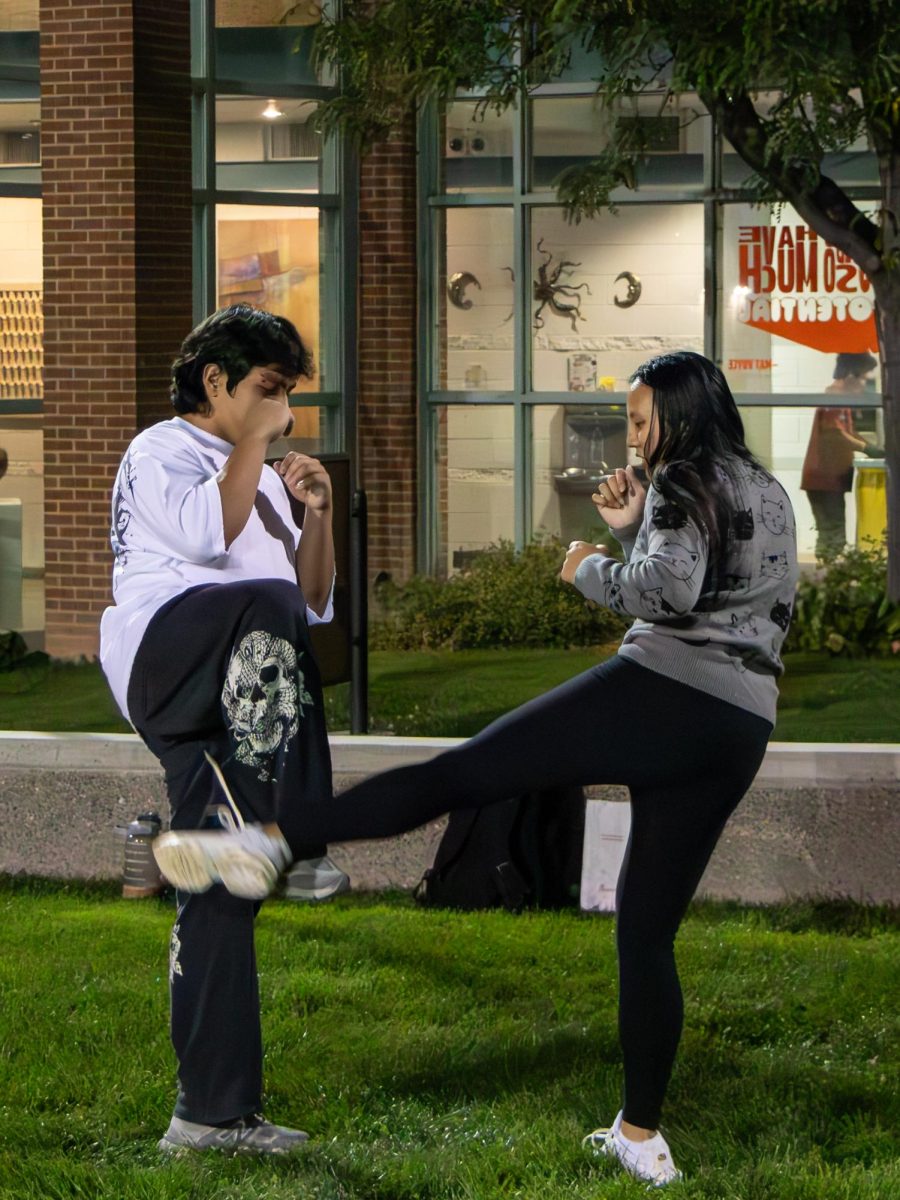The medical world has been struggling to contain the spread of the coronavirus. In much of the United States, recorded cases continue to increase, as does the death toll too. Medical workers are at the frontlines of the pandemic, oftentimes putting themselves in harm’s way so that they can tend to the infected. Ryan Chamberlain, a 19-year-old healthcare worker and student at Colorado Mesa University, is one of these workers.
Chamberlain works as an EMT-IV, which makes him responsible for the care of people from a scene to the hospital. Essentially, he’s required to keep people alive until they get to the hospital where they can receive more extensive treatment.
“We knew [COVID-19] would be a problem clear back to when it started to first hit China. Although the severity of the virus was irresponsibly downplayed by our current presidential office, we in the medical field began preparing for a mass pandemic,” Chamberlain said.
The United States became the epicenter of the virus on March 26, 2020. Reported case numbers continue to rise.
“Right now, the pandemic is starting to get bad. It still has not reached its high mark and will continue to get worse for some time. We suspect that it will most likely continue until mid-September,” Chamberlain said.
As of Easter, the U.S. has officially recorded a total of 549,131 cases. As the number continues to increase, hospitals around the nation are trying to keep up.
“The general environment in the hospitals has been pure chaos. Our hospitals, even being the most technologically advanced in the world, are not prepared to take on such a drastic number of patients at once. We are struggling to find adequate ventilators for patients, personal protective equipment for ourselves, and there are now so many patients that we are running out of rooms to take them in,” Chamberlain said.
To many people, the nurses, doctors, and medical workers have become the heroes of this pandemic. With such a high demand for experienced medical professionals, pay packages of 10,000 dollars a week were offered in New York to nurses to come and help.
“The hospital staff has been absolute troopers through the entire thing, they are working tons of overtime and laying their lives on the line every day to save the lives of people they don’t even know. This virus is much more deadly than people give it credit for, it has killed hundreds and hundreds of thousands of people and will continue to kill more people so long as we disregard healthcare advice and stop spreading it,” Chamberlain said.

Courtesy of Ryan Chamberlain
Stay-at-home guidelines were imposed on a statewide level from each state’s respective governor, rather than the federal government. President Donald Trump will have to reevaluate whether or not he is going to impose further sanctions to limit the spread of the virus or if reopening the economy would be in the best interest of the country.
“The whole medical community is extremely frustrated with our government’s response to this situation. It doesn’t matter if you are a Republican or a Democrat, politicians of any variety have no expertise in a situation like this and cannot be responsible for making the decisions that affect the population. Only the scientists and physicians can truly make any educated predictions on this topic,” Chamberlain said. “As an EMS provider, my experience inside the hospital is less credible than my experience in the field, But I can tell you that both in hospital and in the field, the general impression of the situation is urgent. The problem is that people are taking it far too lightly, they are not as afraid of it as they should be.”
Gabe Elson, a phlebotomist at Saint Mary’s hospital in Grand Junction, weighed in on the coronavirus.
“I think I began to realize the gravity of the COVID-19 situation when I was given a single paper mask and told it had to last me the whole shift and there were no extras on the floor, probably around March 16th. Things further escalated when new regulation required all employees had their temperature checked prior to entering the hospital,” Elson said.
Elson recalls his coworker being sent home after receiving a screened temperature of 99.6, which isn’t even a true fever.
“The employees providing direct COVID patient care are to be congratulated for the atmosphere they have kept up while working in such stressful conditions. They have done so with a smile on their face and regard only for patient safety the entire time. We have all been working hard to meet these new challenges, and I would say we are doing a great job, the Emergency Department most of all,” Elson said.
The pressure on the working conditions for medical professionals in the U.S. continues to get worse, as more patients are admitted into the hospital every day.
“The hardest part about being a healthcare worker during this time is the uncertainty that I might be infecting people. When our whole job is about saving lives and helping people, it is scary to think that we could be spreading a potentially deadly illness without even knowing,” Elson said.
The coronavirus has made hospital spaces cramped and supplies scarce. Nurses and doctors are often overworked as an attempt to help mitigate the spread of the virus.
“So far this month I have worked 144 hours, and at this point, we are only six days into the month of April. I have worked six consecutive 24-hour shifts at this present moment because someone needs to be here to answer those calls and help those people,” Chamberlain said. “It is fatiguing at times but […] it makes all of us in medicine remember why we chose this career and I wouldn’t change that for the world.”








